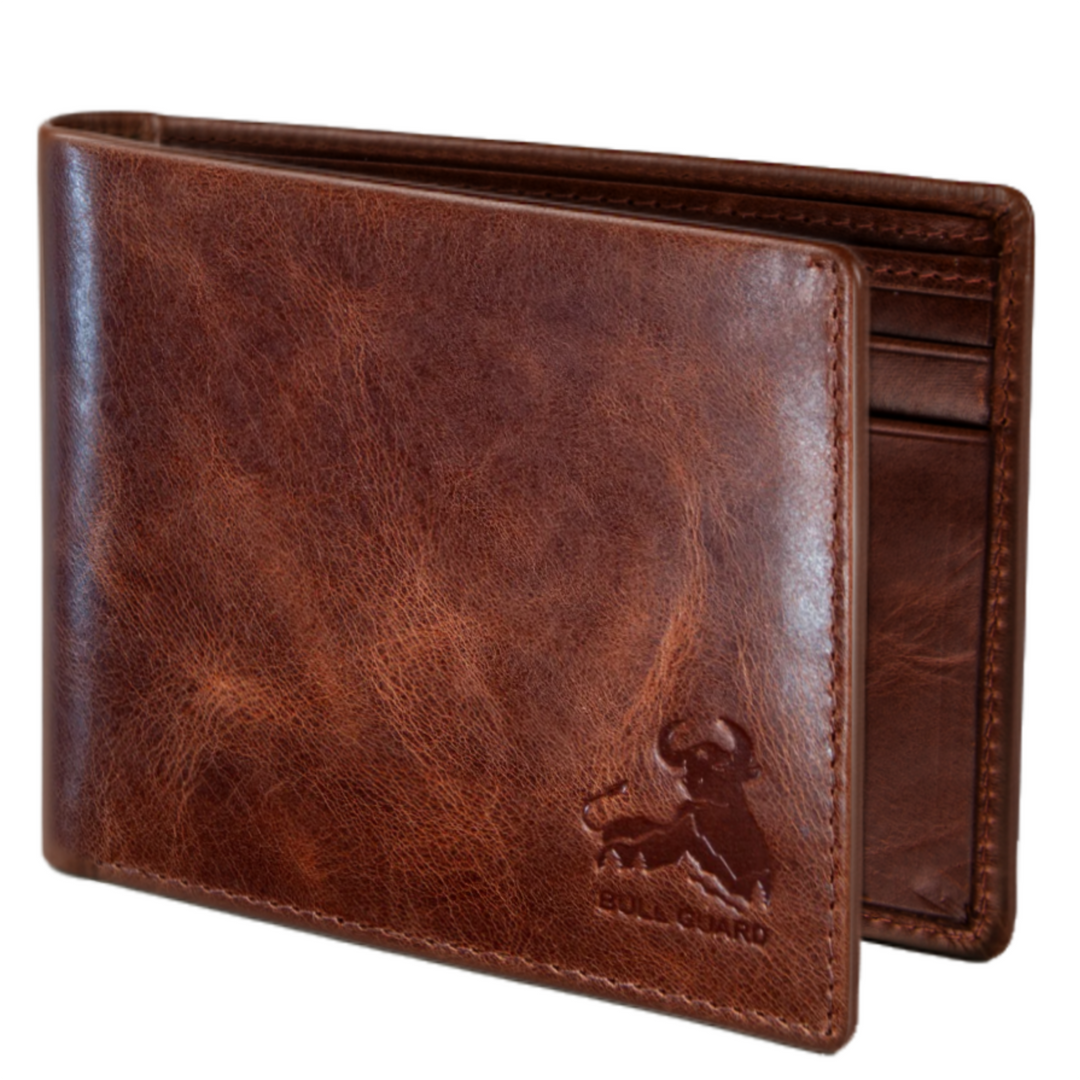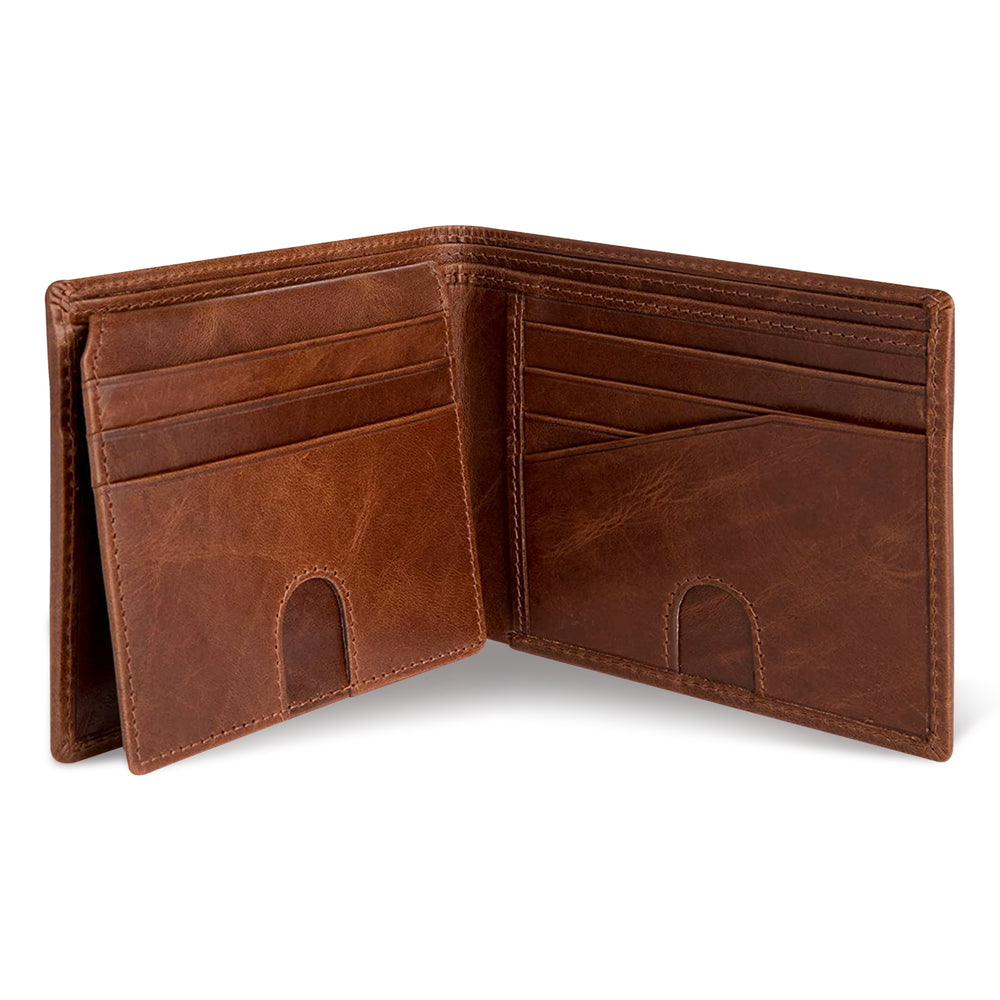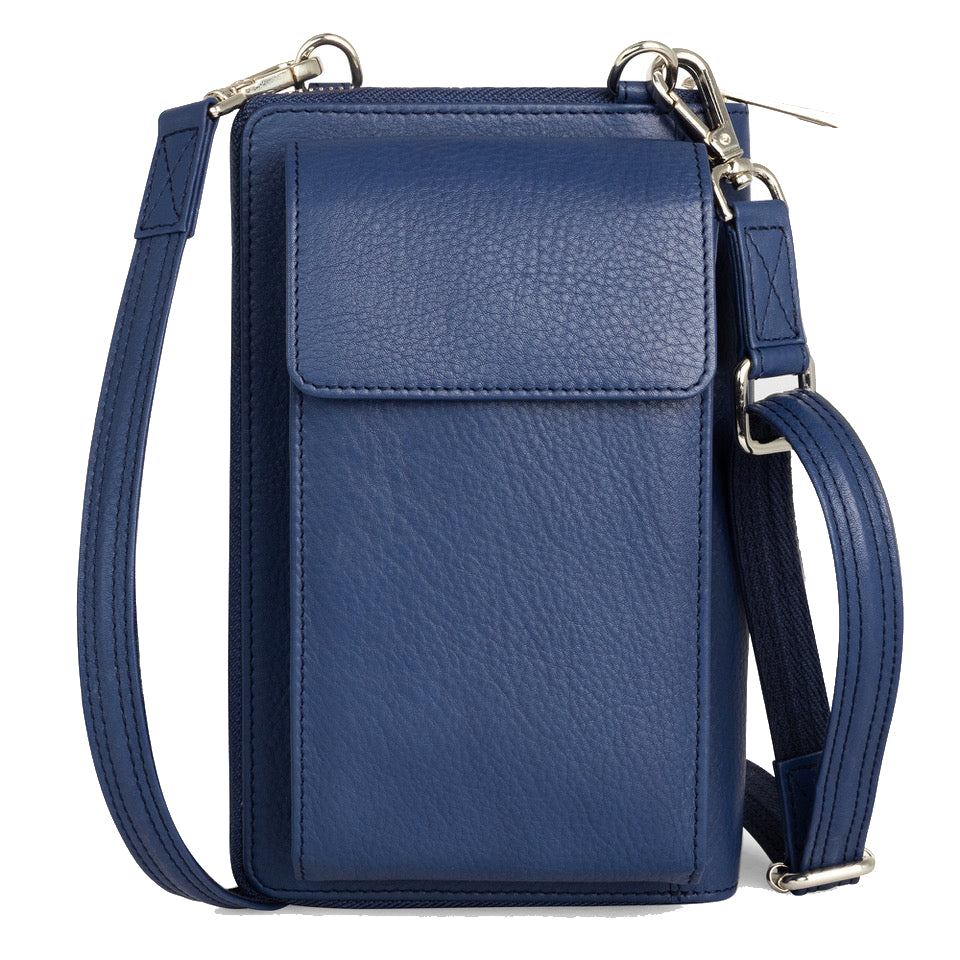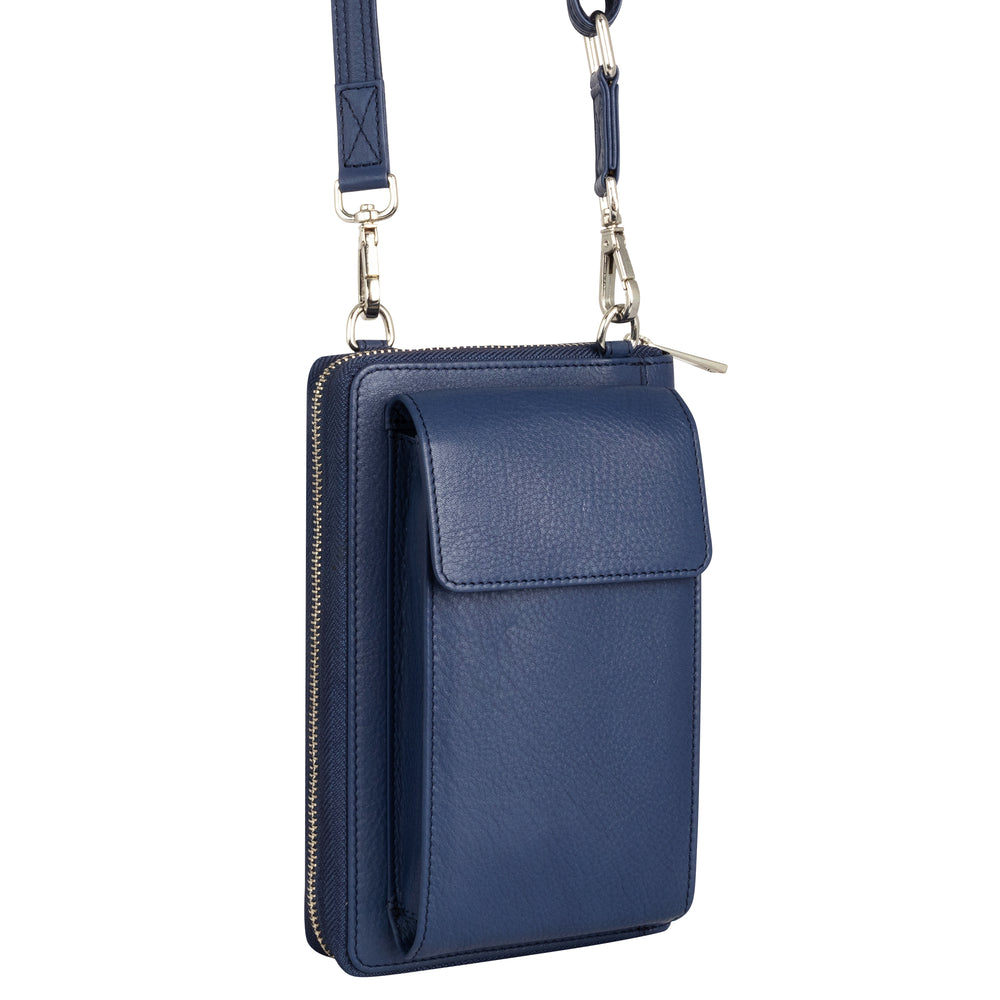Key Takeaways
- The habit of carrying a wallet in the back pocket is a tradition passed down through generations.
- This practice symbolizes readiness and self-reliance.
- The way we carry our essentials reflects deeper aspects of our identity.
- Marcela's experience as a wallet designer offers insight into the cultural significance of this habit.
Table of Contents
More Than a Pocket Habit, A Living Legacy
I'm Marcela, and after years of sketching wallets and watching them come to life in premium leather, I've learned something profound: the way we carry our essentials tells a deeper story about who we are. That wallet in back pocket isn't just a habit, it's a ritual passed down through generations, a symbol of readiness and self-reliance that speaks to the untamed spirit within each of us.
Yet here's what I've discovered through countless conversations with Bull Guard customers: this universal carry method deserves a closer look. From contractors like Logan who need wallets that survive tough daily use, to tech professionals like ZuSu who demand both security and slim profiles, the stories they share reveal a common thread, our accessories aren't just worn, they're lived in, and even the way we carry them shapes our health, security, and daily experience.
At Bull Guard, we believe every wallet should be a trusted companion that evolves with your journey, developing character through authentic use while supporting your body and protecting your identity. Today, I want to share what I've learned about the back pocket carry, its rich history, real impacts, and how to make it work better for your life.
Defining the Back Pocket Wallet: Function, History, and Evolution

What is a back pocket wallet? A back pocket wallet is a leather or synthetic accessory designed to fit comfortably in the rear pocket of pants, typically measuring 4-5 inches wide and featuring a slim profile when empty. Traditional styles include bifolds and trifolds with card slots, bill compartments, and ID windows.
The back pocket carry tradition traces its roots to early American and European culture, evolving from leather pouches and coin purses that men tucked into their rear trouser pockets for security and convenience. This placement kept valuables away from pickpockets who typically targeted front pockets and coat areas in crowded markets and city streets.
What fascinates me most is how this simple carry method has evolved alongside our changing needs. Where once a wallet held only bills and perhaps a single identification card, today's back pocket wallets must accommodate multiple credit cards, IDs, business cards, and even technology like AirTags, all while maintaining that classic slim profile our grandfathers would recognize.
At Bull Guard, we've embraced this evolution by integrating RFID-blocking technology into traditional designs, using only full-grain and top-grain leather that develops beautiful patina over time, and creating thoughtful layouts that organize modern essentials without sacrificing the timeless appeal of a well-crafted wallet.
Anatomy & Features of the Modern Back Pocket Wallet
Every Bull Guard wallet begins with a choice between two premium materials: full-grain leather, which showcases the hide's natural character and develops the richest patina, or top-grain leather, which offers consistent texture and refined appearance. Unlike synthetic alternatives that crack and fade, genuine leather becomes more beautiful with age, a philosophy that resonates with customers like Reliable C. Kiehl, whose wallet still looks new after 18 months of daily back-pocket carry.
- Card Organization: Thumb-push slots and traditional pockets accommodate 6-12 cards with easy access
- Dual Bill Compartments: Separate sections for different denominations or receipts
- ID Windows: Clear holders for driver's licenses, with some models featuring flip-up designs
- Secret Pockets: Hidden compartments for emergency cash or AirTag trackers
- RFID-Blocking Liners: Certified protection against electronic pickpocketing
What sets Bull Guard apart is our attention to the sensory experience. As customer Ryan noted, our wallets "smell better than a new car", that authentic leather aroma that signals genuine craftsmanship. We offer variety through different leather types like Napa, Designer Saffiano, Crazy Horse, and Buffalo, each bringing its own character and aging properties.
The Real Impact: How Carrying Your Wallet in Your Back Pocket Affects You

Health and Ergonomic Consequences
After years of listening to Bull Guard customers share their stories, I've learned that the seemingly innocent act of sitting on your wallet creates a cascade of physical effects that many men never connect to their daily carry habits. When you place even a slim wallet in your back pocket and sit down, your body automatically compensates by shifting your pelvis and spine to accommodate the uneven surface.
This postural shift puts direct pressure on your sciatic nerve, the largest nerve in your body that runs from your lower back down through your hips and legs. Medical professionals have identified a condition called "wallet neuritis" or "hip pocket syndrome," where prolonged pressure from a thick wallet causes symptoms ranging from tingling and numbness to sharp pain radiating down the leg.
Common symptoms of wallet-related nerve pressure: Lower back stiffness, hip discomfort, leg numbness, difficulty finding comfortable sitting positions, and chronic muscle tension in the glutes and hamstrings.
Contractors like Practical Logan and IT consultant Front-Pocket Jim discovered this firsthand, Logan switched to a slimmer Bull Guard design after experiencing daily discomfort, while Jim moved to front-pocket carry entirely. The difference wasn't just comfort; it was about maintaining the physical strength and mobility that their demanding work requires.
Chiropractors consistently report that patients who carry thick wallets in their back pockets develop chronic misalignment issues affecting not just the lower back, but the entire kinetic chain up through the neck and shoulders. The body's remarkable ability to adapt becomes a liability when we force it to accommodate an unnatural sitting position for hours daily. Read more about why you should never sit with your wallet in your back pocket.
Security and Vulnerability Risks
The back pocket placement that once protected our grandfathers' valuables in small-town markets has become a liability in today's world. Pickpockets specifically target back pockets because they're difficult for the carrier to monitor and easy to access in crowded spaces like subway cars, busy sidewalks, and tourist areas.
But there's an even more insidious threat that most people never see coming: electronic pickpocketing. RFID skimmers can read your credit cards and identification from several feet away, and that back pocket wallet makes you a perfect target. As RFID Developer Duck discovered when testing our wallets, many so-called "RFID-blocking" wallets fail basic scanner tests, his previous wallet let key cards read through, while Bull Guard blocked 100% of attempts.
| Carry Method | Pickpocket Risk | RFID Exposure | Physical Awareness | Health Impact |
|---|---|---|---|---|
| Back Pocket | High - Easy target | Maximum exposure | Low - Can't feel access | Significant when sitting |
| Front Pocket | Low - Protected by leg | Reduced exposure | High - Feel any contact | Minimal impact |
| Crossbody/Alternative | Very Low - Always visible | Controlled positioning | Maximum - Always in sight | No sitting interference |
The security challenge extends beyond theft to data protection. Modern wallets must serve as both physical and digital shields, which is why we integrate tested RFID-blocking technology into every Bull Guard design. Security-Conscious ZuSu tested this personally, his Bull Guard wallet keeps nine cards, two IDs, bills, and an AirTag completely unreadable to electronic scanners while maintaining a slim profile.
Wear, Tear, and Wallet Degradation
The repetitive pressure and friction of back pocket carry creates specific wear patterns that I've observed across thousands of returned and replaced wallets over the years. The constant compression from sitting causes leather to develop stress points, particularly at the fold lines and corners where the wallet bends and flexes against your body weight.
This mechanical stress leads to what I call "wallet fade", not just the visual wearing of leather color, but the structural breakdown of stitching, the stretching of card slots, and the development of that unsightly bulge that makes even well-fitted clothing look awkward. The back pocket environment is particularly harsh because it combines pressure, heat, and moisture in a way that accelerates material fatigue.
Quality construction makes a dramatic difference here. Bull Guard wallets use reinforced stitching and premium leather specifically chosen for its ability to withstand this punishment while developing character rather than simply breaking down. As Reliable C. Kiehl noted after 18 months of daily back-pocket carry, his Bull Guard wallet still looks new, a testament to choosing materials and construction methods that embrace the reality of how men actually use their wallets.
Back Pocket vs. Front Pocket: The Complete Comparison
After decades of observing how different carry methods affect our customers' daily lives, I've developed a clear framework for understanding when each approach serves you best. The choice between back pocket and front pocket carry isn't just about personal preference, it's about matching your wallet's placement to your lifestyle, health needs, and security priorities.
| Factor | Back Pocket Wallet | Front Pocket Wallet | Bull Guard Advantage |
|---|---|---|---|
| Accessibility | Quick standing access, awkward when seated | Easy access in all positions | Thumb-push slots work perfectly in front carry |
| Security | High pickpocket risk, maximum RFID exposure | Protected by leg, reduced RFID vulnerability | Tested RFID blocking works in any position |
| Health Impact | Significant when sitting, nerve pressure risk | Minimal physical interference | Slim profile reduces bulk in either pocket |
| Style | Clean silhouette when standing | Slight front bulge, depends on wallet thickness | Premium leather ages beautifully regardless of carry |
| Durability | High stress from sitting pressure | Even wear distribution | Reinforced construction withstands both methods |
Front pocket carry has gained popularity among professionals like Front-Pocket Jim, who switched after years of back pocket discomfort. His Bull Guard slim wallet fits perfectly in his shirt pocket, providing RFID protection and easy access without the health concerns of traditional back pocket carry. The key is choosing a wallet designed for front pocket dimensions, typically thinner and more compact than traditional bifolds.
How to Choose the Best Back Pocket Wallet
If you're committed to back pocket carry, the wallet you choose becomes critical for minimizing health risks while maximizing functionality. Based on feedback from customers like Organized Owen and Classic Kevin, certain design elements make all the difference in back pocket performance.
Essential features for back pocket wallets: Slim profile under 0.5 inches when loaded, reinforced stitching at stress points, quality leather that softens rather than cracks, and genuine RFID protection for security.
The Bull Guard Bifold with Flip Up ID represents the pinnacle of back pocket wallet design. Classic Cindy praised its traditional billfold construction with thoughtful modern updates, thumb slots for easy card access, embossed logo for refined masculinity, and that crucial slim profile that prevents the dreaded "George Costanza" wallet syndrome.
Material choice becomes even more critical for back pocket carry. Full-grain leather like our Wild Mustang finish develops character under pressure rather than simply breaking down. As Leather-Loving Ryan discovered, the sensory experience of quality leather, that new car smell, the supple feel, transforms a utilitarian object into something you genuinely enjoy carrying daily.
For those seeking maximum versatility, our Bifold with Removable ID Insert offers the best of both worlds. Stuart uses the full wallet for daily carry and removes the slim insert for beach trips and theme parks where he wants minimal bulk. The insert holds two credit cards and two IDs, perfect for situations where you need just the essentials.
Making Back Pocket Carry Work for Your Health
The ritual of mindful carrying has become part of my daily practice, and I encourage every Bull Guard customer to develop their own awareness around how they carry their essentials. The simple act of removing your wallet before sitting, whether at your desk, in the car, or at a restaurant, can prevent years of cumulative damage to your posture and nerve health.
Smart Back Pocket Strategies
- Remove wallet before extended sitting periods
- Alternate between back and front pockets throughout the day
- Choose reinforced-pocket jeans or pants with secure closures
- Regularly audit wallet contents to maintain slim profile
Habits to Avoid
- Sitting on wallet during long drives or desk work
- Carrying unnecessary cards, receipts, or coins
- Ignoring early signs of discomfort or numbness
- Using wallets without proper RFID protection in crowds
The key insight I've gained from customers like Practical Jeffery and Reliable C. Kiehl is that the best wallet is one that adapts to your natural rhythms rather than forcing you to adapt to it. Their Bull Guard wallets have become extensions of their daily routines, present when needed, unobtrusive when not, and always ready to support whatever adventure or challenge the day brings.
This philosophy extends beyond just physical comfort to encompass the deeper relationship between a man and his everyday carry. Your wallet isn't just storing your cards and cash, it's carrying your identity, your readiness to engage with the world, and your commitment to living boldly. Whether you choose back pocket, front pocket, or alternative carry methods, the goal remains the same: finding a system that empowers you to move through life with confidence, security, and the quiet strength that comes from knowing you're prepared for whatever comes next.
At Bull Guard, we don't just make wallets, we craft companions for the journey. Each piece is designed to earn its place in your daily ritual, developing character alongside you while providing the security, durability, and timeless style that reflects the untamed spirit within every person who chooses to carry life boldly.
For more insights on choosing the right wallet style, check out our type of wallets guide.
For additional medical perspective, see this external resource on wallet neuritis.
Frequently Asked Questions
Are you supposed to put your wallet in your back pocket?
While it’s common to carry wallets in the back pocket for easy access, it’s not necessarily the best choice. Storing your wallet there can cause discomfort and may impact posture over time. It’s often better to carry a wallet in a front pocket or a secure bag to reduce strain and protect your belongings.
What is wallet in the back pocket syndrome?
Wallet in the back pocket syndrome refers to the discomfort and potential health issues caused by sitting unevenly on a wallet placed in the back pocket. This can lead to lower back pain, sciatica, or muscle imbalance due to the body being tilted every time you sit. Over time, it may cause chronic pain or posture problems.
What happens if we keep our wallet in the back pocket?
Keeping a wallet in the back pocket regularly can lead to physical discomfort, including pressure on nerves and muscles in the lower back and hips. It can cause misalignment in the spine, resulting in pain or numbness, especially when sitting for long periods. Additionally, wallets in back pockets are more vulnerable to theft or accidental damage.
Why do men keep their wallet in their back pocket?
Men often keep their wallets in the back pocket out of habit and convenience, as it provides quick access and feels natural. It also fits comfortably when wearing pants designed with deeper or wider back pockets. For many, it’s a cultural norm reinforced over time, despite potential ergonomic drawbacks.
Does sitting with wallet on back pocket cause pain?
Yes, sitting with a wallet in the back pocket can cause pain by creating uneven pressure on the pelvis and lower spine. This pressure can irritate nerves, particularly the sciatic nerve, leading to discomfort, numbness, or even long-term lower back issues. Removing the wallet before sitting or switching to front pocket carry can help alleviate these symptoms.
Where do most men carry their wallet?
Most men traditionally carry their wallets in the back right pocket for ease of access and habit. However, increasingly many are opting for front pockets, jacket pockets, or secure bags to improve comfort and security. The choice often balances convenience, fashion, and the desire to avoid discomfort or potential theft.










